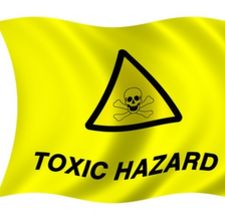 The breast cancer rate in the UK per 100,000 women in 2010 was practically double the rate in 1971. A number of UK scientists attribute this dramatic rise in the rates to the routine exposure to toxic chemicals, which are added to personal care, beauty, and household products. However, with the introduction of regular screening in 1987, the mortality rates have dramatically declined. Proving cause and effect of environmental exposure cause is difficult, time-consuming, and expensive but the interest is growing. These chemicals are getting into women’s bodies by applying them to the skin, by inhaling them, and by eating and drinking. The report from Breast Cancer UK, a public charity, offers practical suggestions to reduce one’s exposure to these toxic chemicals:
The breast cancer rate in the UK per 100,000 women in 2010 was practically double the rate in 1971. A number of UK scientists attribute this dramatic rise in the rates to the routine exposure to toxic chemicals, which are added to personal care, beauty, and household products. However, with the introduction of regular screening in 1987, the mortality rates have dramatically declined. Proving cause and effect of environmental exposure cause is difficult, time-consuming, and expensive but the interest is growing. These chemicals are getting into women’s bodies by applying them to the skin, by inhaling them, and by eating and drinking. The report from Breast Cancer UK, a public charity, offers practical suggestions to reduce one’s exposure to these toxic chemicals:
- Read the labels on products and buy those with fewer ingredients and be aware of which chemicals may be hazardous to your health.
- Be especially careful with food and drink for babies and small children especially those with bisphenol-A (BPA) and diethylstilbestrol (DES) as these are both hormone altering substances which can raise the risk of developing cancer later in life
- Cut down on food and drinks that come in a can unless it says they are BPA free
- Body care products – avoid, or cut down on the ones that contain TEA (triethanolamine), Formaldehyde, DEA (diethanolamine), Parabens, Sodium Lauryl/Laureth Sulfate, Phthalates (DEHP, BBP, DBP, DMP, DEP), DMDM Hydantoin, Triclosan, Fragrance, PEGs (polyethylene glycol), and anything with "glycol" or "methyl
- Hand washes, anti-bacterial soaps, toothpaste – avoid products containing Triclosan
- Food and cosmetic products avoid or cut down those that contain Parabens
Breast Cancer UK advocates that the government take action to reduce people’s exposure to cancer-causing chemicals
Christian Nordqvist (1 October 2012) Medical News Today www.medicalnewstoday.com
